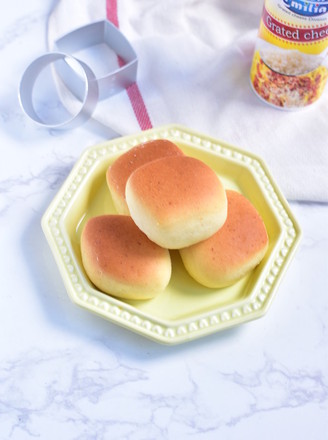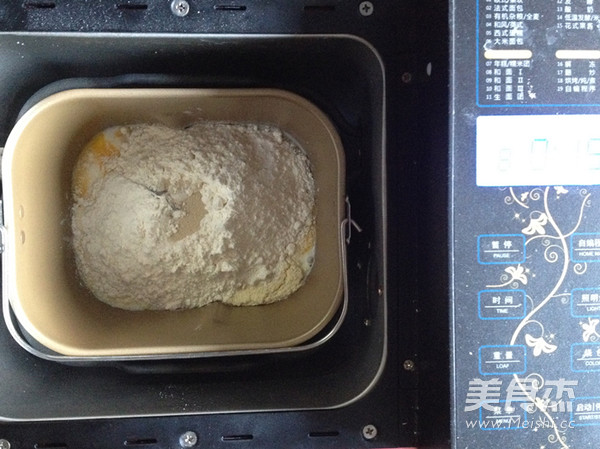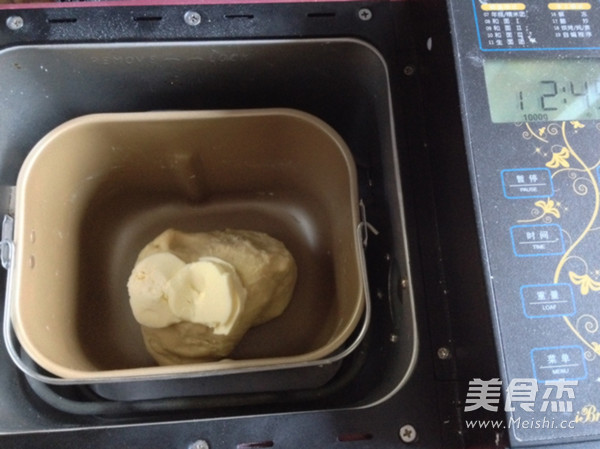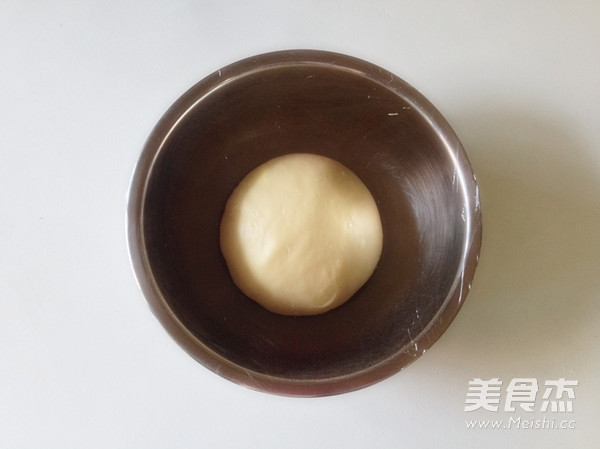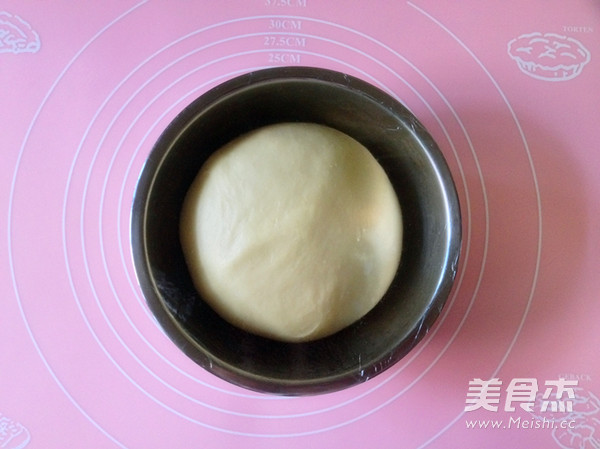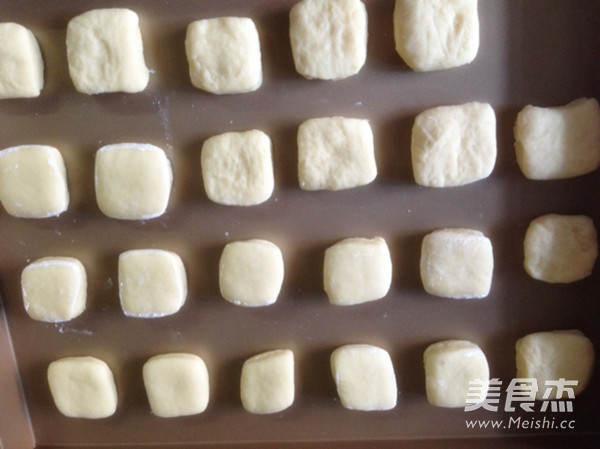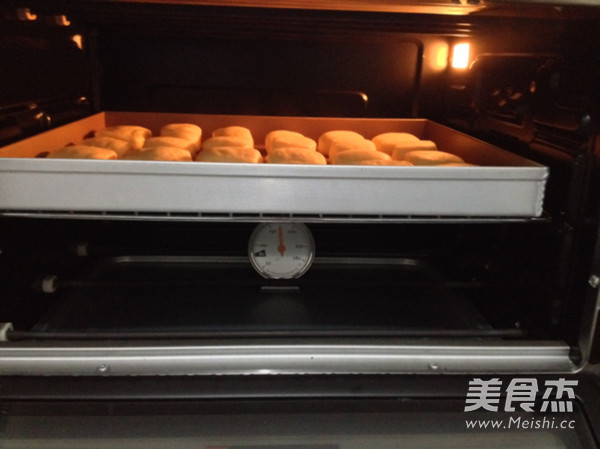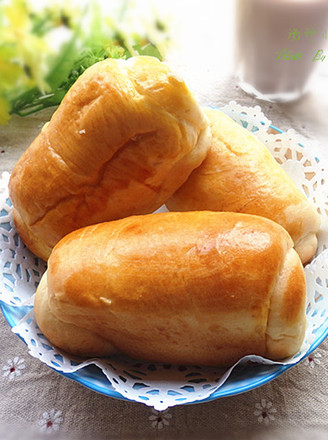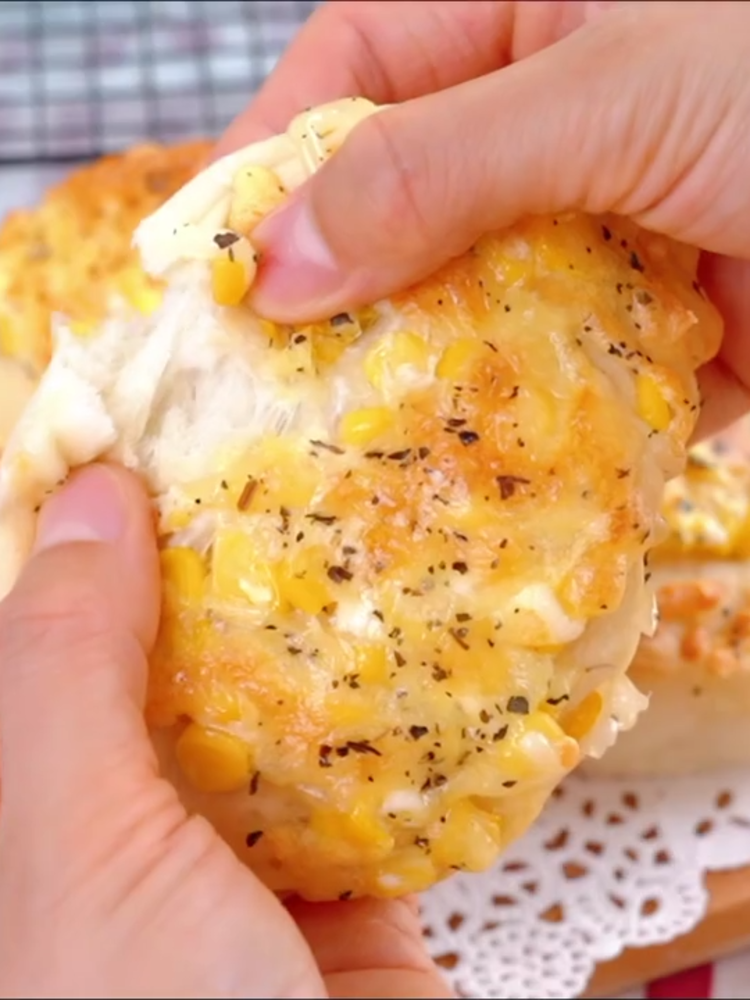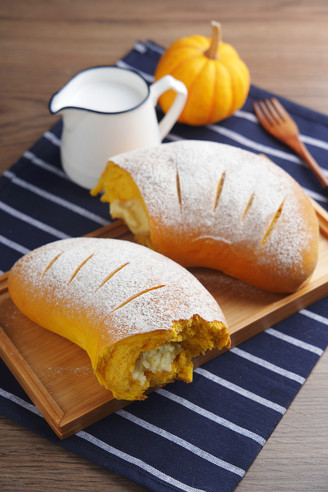Small Cheese Bread
1.
Prepare the required materials (unsalted butter is softened at room temperature)
2.
Pour the ingredients except unsalted butter into the bread bucket and start the dough mixing process
3.
Knead the dough to a coarse film state (add unsalted butter softened at room temperature), continue to start the kneading process, knead until the dough is in a film state
4.
Round the kneaded dough, close it down and squeeze it tightly, put it in a container, spray some water on the surface and cover it with plastic wrap, and ferment for about 1 hour to 2 times its size
5.
Sprinkle some flour on the tabletop to prevent sticking, take out the fermented dough
6.
Take the basic fermented dough out of the air, round it, cover it with plastic wrap and let it stand for 15 minutes
7.
Sprinkle high-gluten flour on the surface of the dough (not too much), and use a rolling pin to roll it into a 1cm thick dough
8.
Prepare a laminating film or dip a little flour on a knife, cut the dough into 2cm*2cm cubes, and transfer the cut cubes to the baking tray
9.
Spray some water on the surface of the small cubes of dough, put it in the oven, put a bowl of hot water underneath, and ferment to 1.5 times its size
10.
Preheat the oven to 180 degrees, and heat the middle layer up and down for 12-15 minutes until the surface is golden brown.
Tips:
1. You can change to Parmesan cheese powder if you don’t have Casa cheese powder. If you don’t like this taste, you can just leave it alone.
2. Roll the skin to a thickness of 1cm as much as possible, and cut the same size, otherwise the baking will affect
3. The small cheese bread that can't be eaten can be stored in a fresh-keeping bag or jar, and it is better to vacuum with a vacuum jar.
4. The oven temperature is a reference value. Set the temperature reasonably according to your own oven to avoid over-baking

